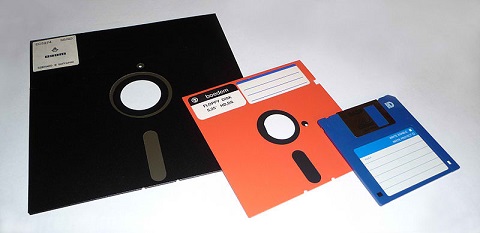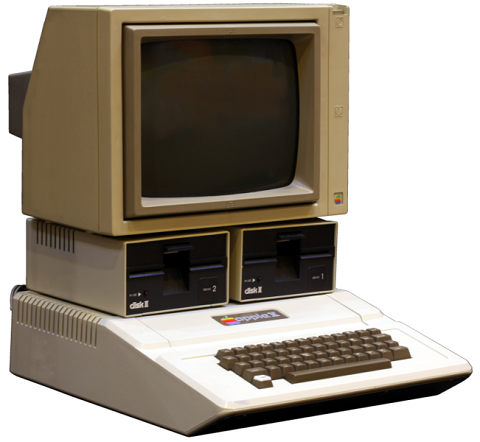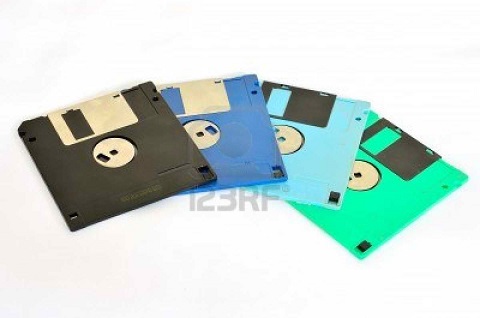This week on YugaTech Throwback Thursday, we’re going to look back on the Floppy Disk; how it got its name, and how the invention of this long-forgotten storage device has single-handedly changed the way people stored data and the computing industry in general.
Out with punch cards and tapes, and in with the Floppy
The year was 1967. IBM needed “a reliable and inexpensive” storage device that will be used to load microcode into their computers and will serve as viable alternative to then popular Cassette Tapes. The company turned to the late Alan Shugart (1930-2006) which is then the Product Manager of Direct Access Storage department.

(From left to right) 8-inch, 5.25-inch and 3.5-inch Floppy disks
Backed by a group of talented engineers, Shugart and his team first came up with an 8-inch read-only storage device they coined “memory disk”. It can hold 80-kilobyte’s worth of data which was a big thing during that time, considering that it’ll take tons of punch cards to replicate the same result.
But their creation had one major flaw – it was susceptible to dusts and scratches. Their solution was to place the bare disk inside a flexible plastic enclosure. The flimsy nature of the said enclosure gave birth to the memory disk’s nickname – Floppy.
IBM’s Floppy disk was just too big
Floppy was made available to the consumer market in 1971 and was an instant hit among the techie crowd. But only a year after its consumer release, Shugart left IBM and founded his own tech firm in 1973 which he named after himself (Shugart Associates).

Floppy disk drives
Two years after going solo, two of Shugart’s engineers namely Jim Adkinson and Don Massaro was approached by An Wang who is the founder of Wang Laboratories. Wang wanted a smaller storage device which he can use for his machines, but he also wanted it to be considerably cheaper than the 8-inch Floppy which was being retailed for USD200PHP 11,737INR 16,950EUR 190CNY 1,456 a pop.
Fueled by this rather unusual proposition, Shugart and his team began working on their next project. In 1976 they pull out the rabbit from the hat and came up with the 5.25-inch Floppy disk which can handle 98.5KB of data. Shugart Associate hit a gold mine with the 5¼-incher and they’ve successfully overthrown the 8-inch version as the king of the hill.
Then a genius hippy stepped in…
Although Shugart’s firm was already winging it with their smaller Floppy, what really shifted the popularity of their creation to high gear was when Steve Jobs decided to make the transition from Data Cassettes to the 5.25-inch format for the Apple II in 1978.

Job’s buddy and Apple co-founder, Steve Wozniak, saw greater potentials on the 5 ¼-inch format which eventually led to the creation of the Disk II. Further down the line, Apple further refined their drives to increase performance for their new computers. The company made a total of 6 variations of the drive before they decided to jump aboard the compact floppy bandwagon in 1984.
Last evolution, before extinction
One of the things that made Shugart Associate’s disk popular was the fact that it was considerably smaller than IBM’s 8-incher. However, as time goes by, people wanted a smaller version of storage device, something that they can easily put inside their pockets.
This consumer need sparked a new trend which led to the creation of smaller versions of the popular storage device. Companies began manufacturing in smaller formats which ranged from 2-inch up to 4-inch, but it was Sony and its 3.5-inch Floppy disk that was considered by the Microfloppy Industry Committee as the standard in 1982.

But Sony was clever enough to not put all of its eggs in one basket. While the Japanese firm was developing the 3.5-inch floppy, they were also collaborating with Philips in coming up with digital audio discs that will replace the aging gramophone records. The partnership led to the creation of Compact Discs which eventually replaced Floppies as the go-to device for data storage.
The legacy lives on
Almost half a century since its invention, the concept behind the Floppy Disk is still being used up to this day in devices such as Hard Disk drives. Although it’s meant to serve as a tool for storing data, let’s not forget that Floppy disks also played a crucial role in software development and the evolution of personal computers.
The invention of Floppy disk truly is Alan Shugart’s invaluable gift to tech aficionados all over the world.

YugaTech.com is the largest and longest-running technology site in the Philippines. Originally established in October 2002, the site was transformed into a full-fledged technology platform in 2005.
How to transfer, withdraw money from PayPal to GCash
Prices of Starlink satellite in the Philippines
Install Google GBox to Huawei smartphones
Pag-IBIG MP2 online application
How to check PhilHealth contributions online
How to find your SIM card serial number
Globe, PLDT, Converge, Sky: Unli fiber internet plans compared
10 biggest games in the Google Play Store
LTO periodic medical exam for 10-year licenses
Netflix codes to unlock hidden TV shows, movies
Apple, Asus, Cherry Mobile, Huawei, LG, Nokia, Oppo, Samsung, Sony, Vivo, Xiaomi, Lenovo, Infinix Mobile, Pocophone, Honor, iPhone, OnePlus, Tecno, Realme, HTC, Gionee, Kata, IQ00, Redmi, Razer, CloudFone, Motorola, Panasonic, TCL, Wiko
Best Android smartphones between PHP 20,000 - 25,000
Smartphones under PHP 10,000 in the Philippines
Smartphones under PHP 12K Philippines
Best smartphones for kids under PHP 7,000
Smartphones under PHP 15,000 in the Philippines
Best Android smartphones between PHP 15,000 - 20,000
Smartphones under PHP 20,000 in the Philippines
Most affordable 5G phones in the Philippines under PHP 20K
5G smartphones in the Philippines under PHP 16K
Smartphone pricelist Philippines 2024
Smartphone pricelist Philippines 2023
Smartphone pricelist Philippines 2022
Smartphone pricelist Philippines 2021
Smartphone pricelist Philippines 2020
Michael says:
Today’s computer doesn’t have floffy disk compartment anymore. Since, SD cards and flash drives released on markets. Poor floffy disk gone to history. I still have 1 on my drawer it’s just 25mb. Cool!
Chep Oyen says:
Floffy disk seems handful for students of 90’s and early 20th century.
diorarat says:
25mb?? I thought the largest was only about 1.5mb? Is that a 3.5″ floppy you are talking about?
duppy says:
floffy?! bwiset!
Domeng Tarugo says:
There is no 25mb diskette.
Most common storage space for 5.25″ disks is 1.2mb and 1.44mb for 3.5″ floppies.
Know your facts.
sdfsd says:
… Titi nyo floffy!
Jeric says:
they will always have a place in our computer the drive a: and drive b:
Iyan Sommerset says:
Lawl, didn’t realize that – kidz in the future will be wondering why drive letters start at C: with no idea why. Kinda like they won’t know what that save icon is.
paeng macho says:
may nakita pa kong ganyan sa cdr king XD
benchmark says:
may 8″ pa pala…naabutan ko lang yung 5.25″ and I know I still have some sa bahay….games and word ata yun laman :-)
KUSINA101 says:
nung ojt ako sa PLDT, meron pa silang mga legacy systems na gumagamit ng mga floppy disk na sinlaki ng plato. i think yun yung 8inch. :)
Faust says:
some legacy systems especially in banks are still using the 3.5″ 1.44mb disks and still existing until today.
KUSINA101 says:
I agree, I’m working in the bank and the 1.44mb disks are still in use for a lot of old systems.
Faust says:
any plans of migrating?
ka.bambi says:
may 8 inch floppy akong nakita sa old drawers ni papa dati, hanapin ko nga ulit
JTC_Mamita says:
The 5.25 inches floppy capacities as far as I remember were 360kb and 1.2mb. And during those days we would use it as side A and side B by copying the notch at the right…Baligtaran in Tagalog…
Abdul Jakul says:
who can forget the WRITE Protect sticker sa side ng 5.25 hehehe
countrymouse says:
remember those ones in high school 2000’s and were contented with 1.44mb, good for word files. meron pa kmi nito nakatago sa drawer. parang may nakita pa ako nito sa nbs at cdr king.
koder says:
naalala ko noon mga kaklase ko sa hayskul, sinasabit ung mga floppy disks na yan sa zipper nang bag para cool ang may ari ng bag, techie!
hehehe…bubutasan sa corner at gawing parang keychain…hehek!
wew says:
andami ko pang nakikitang floppy disks dito galing sa office na pinagtatrabahuhan ng mommy ko before hehehe i think nasa 15 un at may lalagyan pa =)
silentwarrior says:
Floppy disk ‘driver’ is still required by Windows, and without it – Windows cannot boot (BSOD).
Try downloading ‘Autoruns’, a utility that shows all the running startup files much thoroughly than MSCONFIG. Run it and one of the entries there is the floppy drive driver.
If you uncheck the floppy drive driver from loading and restarts Windows — you get a dead machine, and can only use System restore to fix it (or a full Windows reformat if you have no system restore checkpoint available).
Tang I.N. Yu says:
Ang computer room ko, ang kanyang wallpaper ay floppy disk at optical disk, but undergoing renovations to include ung sdcard lamesa at apple floor. Ginaya ko ito sa music room ko na panay polk audio speakers naman ang dinding nia. Kau, have u tried na glass bonded 64gb class 10 sdhc ang lamesa ng computer room niu? Lol. Papatapos plang hopefuli. Tapos ang floor ko ay apple ipad4 ay iphone5, at na cement sila in clear polycarbonate pra pagpasok ko feel na feel ko tinatapakan ko pride at mukha ng mga apple fans na god nila ang ipad at iphone hahaha.
kikomachine says:
ayos! konti nalang junkshop na..